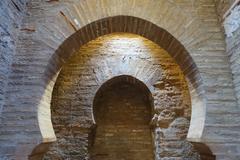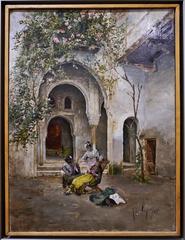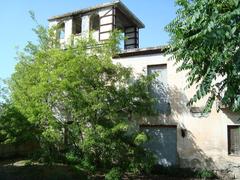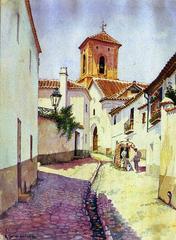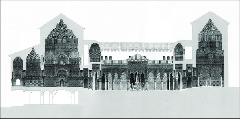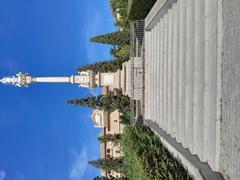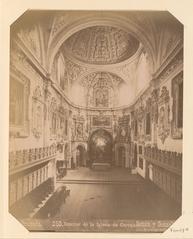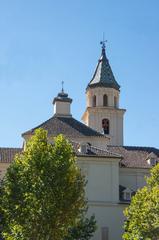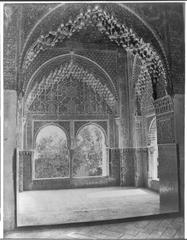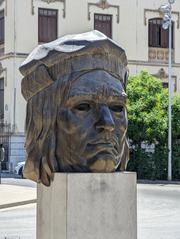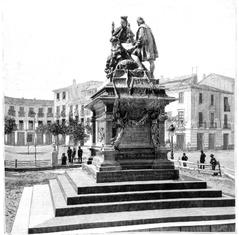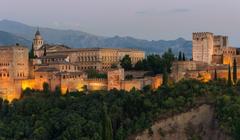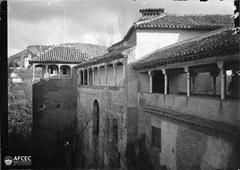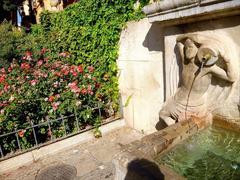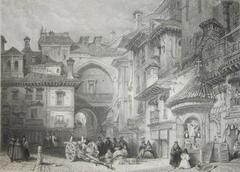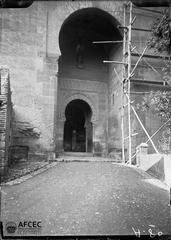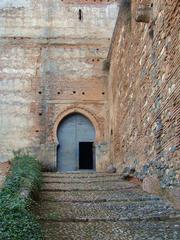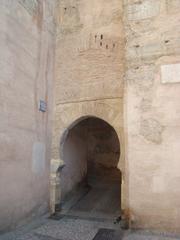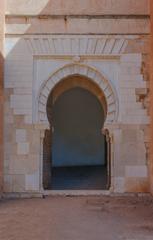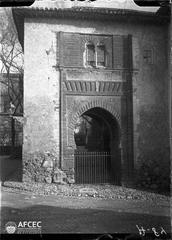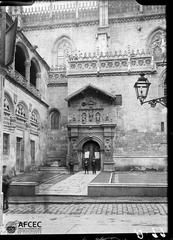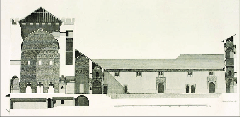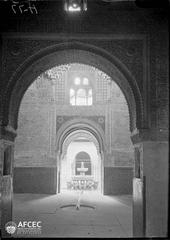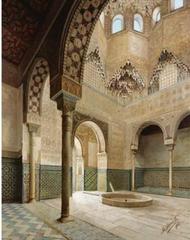Alhambra Visiting Hours, Tickets, and Guide to Granada Historical Sites
Date: 15/06/2025
Introduction to Alhambra, Generalife, and Albayzín in Granada
Granada, Spain, is home to some of Europe’s most remarkable historical landmarks: the Alhambra, Generalife, and Albayzín. Together, these sites form a captivating tapestry of Moorish heritage, Islamic art, and centuries of cultural interplay between Islamic and Christian civilizations. The Alhambra, a UNESCO World Heritage Site since 1984, is a masterpiece of medieval Islamic architecture, celebrated for its Nasrid palaces, formidable fortifications, and the lush Generalife gardens—once the summer retreat of the Nasrid sultans. Nearby, the labyrinthine Albayzín district preserves the essence of Moorish Granada with its narrow streets, whitewashed houses, and tranquil cármenes (walled gardens).
Visiting these sites requires both an appreciation of their historical and artistic significance and practical information about visiting hours, ticketing, accessibility, and local amenities. This comprehensive guide combines historical context, architectural highlights, and up-to-date visitor advice, including ticket prices, booking tips, and recommended itineraries. Whether you wish to admire the intricate stuccowork of the Nasrid palaces, stroll through the serene Generalife gardens, or soak in the ambiance of the Albayzín, this resource will help you make the most of your Granada adventure.
For the latest information, including official ticketing and current visiting hours, always consult the official Alhambra website and Granada tourism resources (historytools.org; alhambra.org; turismogranada.info; visit-alhambra.com).
Contents
- Introduction
- Historical Development of the Alhambra
- Architectural Significance
- Cultural and Historical Importance
- Visitor Information: Alhambra Visiting Hours, Tickets, and More
- Generalife: Visiting Hours, Tickets, and Gardens Guide
- Albayzín: Visiting Hours, Tickets & Historical Guide
- Summary and Visitor Tips
- References
Historical Development of the Alhambra
Early Origins and Nasrid Dynasty
The origins of the Alhambra date to the 9th century, when a modest fortress was built atop Sabika Hill (historytools.org). Its transformation into a palatial city began in the 13th century under the Nasrid dynasty, the last Muslim rulers of the Iberian Peninsula. Beginning with Muhammad I (1238–1273), the Nasrids turned the Alhambra into a complex that served as a royal residence, administrative center, and military stronghold (castlesintheworld.com).
Successive rulers expanded the site, constructing the Nasrid Palaces, the Alcazaba (fortress), and the Generalife gardens. The Alhambra became the political and cultural heart of the Emirate of Granada, symbolizing the height of al-Andalus’s artistic achievements (alhambra-granada-tickets.com).
Christian Conquest and Later Modifications
In 1492, Granada fell to the Catholic Monarchs Ferdinand and Isabella. The Alhambra became a royal court for the Christian rulers, who introduced Renaissance features such as the Palace of Charles V (begun in 1527). Despite these modifications, much of the Nasrid architecture was preserved, maintaining the Alhambra’s unique blend of Islamic and Christian influences (historytools.org).
Architectural Significance
Layout and Structure
The Alhambra complex covers approximately 26 acres and comprises:
- Alcazaba: The original fortress with panoramic towers.
- Nasrid Palaces: The royal residential quarters.
- Generalife: The summer palace and gardens.
- Palace of Charles V: A Renaissance addition (historytools.org).
The name “Alhambra” derives from the Arabic “Al-Hamra” (“the red one”), referencing the reddish hue of its walls (alhambra-granada-tickets.com).
Nasrid Palaces
The Nasrid Palaces are celebrated for their elaborate stuccowork, arabesque tile mosaics, and muqarnas ceilings. Highlights include the Court of the Lions and Court of the Myrtles, which employ water, light, and intricate patterns to evoke the Islamic vision of paradise (spaincultures.com).
Alcazaba
The Alcazaba is the oldest part of the Alhambra, with imposing towers like the Torre de la Vela offering sweeping views of Granada and the Sierra Nevada (historytools.org).
Generalife
Situated to the east, the Generalife was the sultans’ summer palace. Its gardens blend architecture and nature, featuring water channels, fountains, and terraced flower beds. The Court of the Water Channel and Sultana’s Garden are particularly admired for their tranquility and ingenious irrigation (thevivalavita.com).
Palace of Charles V
The Renaissance-style Palace of Charles V features a grand circular courtyard and monumental columns, contrasting with the Nasrid Palaces and reflecting the ambitions of the Holy Roman Emperor (historytools.org).
Cultural and Historical Importance
Symbol of Al-Andalus
The Alhambra epitomizes the cultural, artistic, and philosophical achievements of al-Andalus, blending Islamic, Christian, and Jewish influences (spaincultures.com). Its architecture and art reflect ideals of paradise, wisdom, and the coexistence of cultures.
UNESCO World Heritage and Modern Impact
Recognized as a UNESCO World Heritage Site in 1984, the Alhambra welcomes nearly 2.7 million visitors yearly, significantly contributing to Granada’s economy and identity (historytools.org; spaincultures.com).
Literary and Artistic Legacy
The Alhambra has inspired generations of writers and artists, including Washington Irving, whose “Tales of the Alhambra” helped popularize the site (alhambra-granada-tickets.com).
Practical Visitor Information: Alhambra Visiting Hours, Tickets, and More
Visiting Hours
- April–October: 8:30 AM–8:00 PM
- November–March: 8:30 AM–6:00 PM
- Night Visits: Available on select dates; check the official site for details.
Tickets and Prices
- General Daytime Ticket: €14–€20 (adults), discounts for EU citizens, seniors, and children.
- Purchase: Online via the official website is strongly recommended due to demand and strict capacity limits.
How to Buy Alhambra Tickets
Book well in advance (preferably weeks ahead) through official or authorized sellers. Entry times are strictly enforced, especially for the Nasrid Palaces.
Accessibility
Adapted routes and staff assistance are available for visitors with limited mobility, though some areas have uneven surfaces and steps.
Guided Tours and Events
Official guided tours are available and highly recommended for in-depth historical and architectural context. The Alhambra also hosts occasional cultural events requiring separate admission.
Getting There
- On Foot: 20–30 minutes uphill from Plaza Nueva.
- By Bus: Lines C30 and C32 connect to the entrance.
- By Taxi: Convenient drop-off at the main gate.
- Parking: Limited, with fees starting at €5.45 for 3 hours (adventurousmiriam.com; earthtrekkers.com).
Facilities
- Restrooms at the Access Pavilion and Generalife gardens.
- Stroller storage available.
- Comfortable footwear is strongly advised.
Discover the Generalife: Visiting Hours, Tickets, and Granada’s Historical Gardens
Historical Background
The Generalife, deriving from the Arabic Yanat al-Arif (“Garden of the Architect”), was the Nasrid sultans’ summer palace built in the 14th century (alhambra.org). It showcases both sophisticated Moorish horticultural techniques and a tranquil retreat from court life (turismogranada.info).
Design and Features
Symmetry & Geometry: The gardens reflect Islamic ideals of balance and symmetry.
Water Elements: Ingenious acequias (water channels), fountains, and pools create a soothing atmosphere and cool the air (turismogranada.info).
Key Features:
- Patio de la Acequia: Central water channel flanked by cypress and flower beds.
- Jardín de la Sultana: Lush, secluded garden.
- Escalera del Agua: Iconic water staircase.
- Pavilions and Arched Gateways: Offer shade and views (alhambra.org).
Visitor Information
- Hours: 8:30 AM–8:00 PM (spring/summer), 8:30 AM–6:00 PM (autumn/winter). Confirm on the official site.
- Tickets: Included in the general Alhambra ticket or available separately. Advance booking is essential (thevivalavita.com).
- Accessibility: Adapted routes are available, though some areas may be challenging.
- Rules: Remain on marked paths, do not pick flowers, and respect preservation guidelines.
- What to Bring: Comfortable shoes, sun protection, water, camera.
Welcome to Albayzín: Visiting Hours, Tickets & Historical Guide
Overview
The Albayzín, a UNESCO World Heritage Site, is Granada’s most atmospheric district, renowned for its Moorish street plan, whitewashed houses, and vibrant cármenes. Founded in the 11th century, it flourished under the Nasrids and retains its unique character today.
Key Features
- Moorish Urban Layout: Maze-like, shaded alleys designed for privacy and coolness.
- Traditional Cármenes: Houses with lush private gardens.
- Mirador de San Nicolás: Renowned for its panoramic Alhambra views.
- Carrera del Darro: Picturesque riverside promenade.
- Aljibe del Rey & Corral del Carbón: Noteworthy monuments with set visiting hours.
Visitor Information
- Neighborhood Access: Open 24/7. No general admission ticket required.
- Monuments: Aljibe del Rey (10 AM–6 PM, ~€5), Corral del Carbón (10 AM–7 PM, usually free).
- Guided Tours: Widely available, often €20–€40 per person.
- Getting There: On foot, by taxi, or local buses (C31, C32). Parking is limited.
- Accessibility: Challenging for those with mobility issues due to steep, cobbled streets.
Local Life & Experiences
- Tapas Bars & Tea Houses: Enjoy local cuisine and drinks.
- Flamenco in Sacromonte: Traditional performances in cave venues.
- Arab Baths: Restored hammams for relaxation.
- Festivals: Check local listings for cultural events.
Summary and Visitor Tips
Exploring the Alhambra, Generalife, and Albayzín provides an unparalleled journey through Granada’s Moorish and Christian heritage. Secure tickets early, mind timed entries (especially for the Nasrid Palaces), wear comfortable shoes, and consider guided tours for deeper insight. Take time to discover nearby attractions like the Mirador de San Nicolás and the lively Sacromonte district. For up-to-date information, always consult the official Alhambra website, and consider downloading the Audiala app for real-time updates and guided tours.
Frequently Asked Questions (FAQs)
Q: What are the Alhambra visiting hours?
A: 8:30 AM–8:00 PM (April–October), 8:30 AM–6:00 PM (November–March). Night visits are offered on select dates.
Q: How do I buy tickets?
A: Online advance purchase is essential. Use the official website or authorized vendors.
Q: Are guided tours available?
A: Yes, in multiple languages. Highly recommended for historical context.
Q: Is the Alhambra accessible for visitors with disabilities?
A: Some areas are adapted, but others have uneven terrain. Contact visitor services for details.
Q: Are there nearby attractions?
A: The Albayzín, Granada Cathedral, and Sacromonte are all within easy reach.
References and Further Resources
- historytools.org
- alhambra.org
- visit-alhambra.com
- alhambra-granada.org
- turismogranada.info
- adventurousmiriam.com
For further details, including images and interactive maps, please visit the official resources linked above. Your journey through Granada’s historic wonders promises to be unforgettable.

